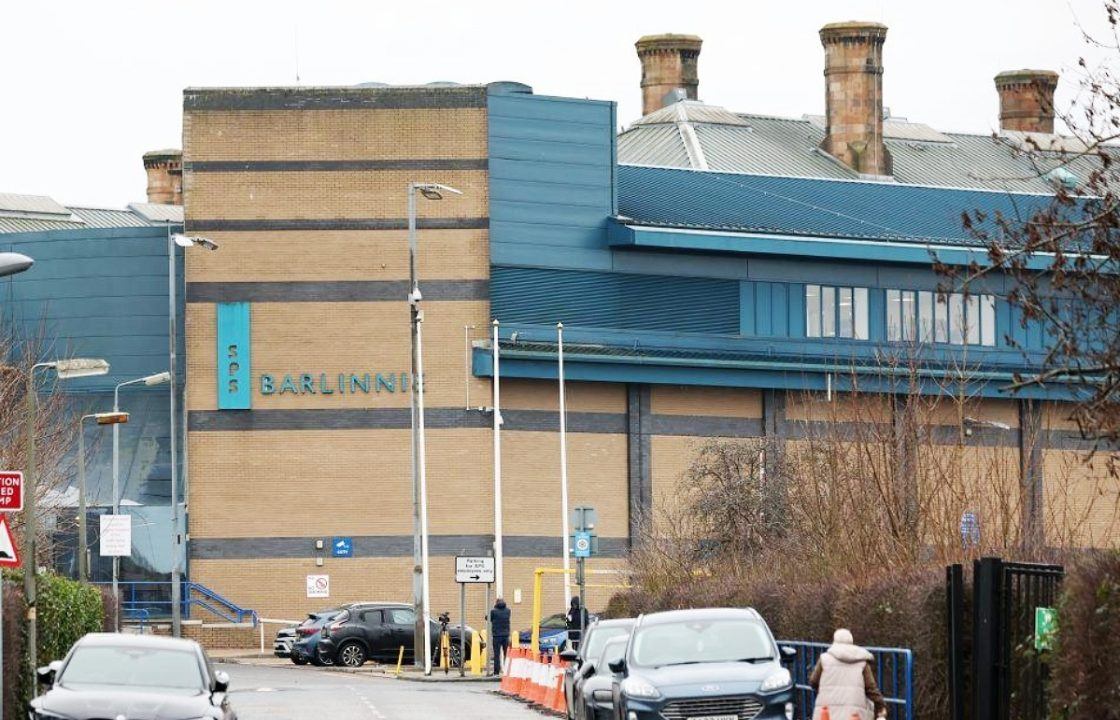Key Points
-
 Ten of Scotland’s prisons are at “red risk” status as the population hits 8,359 despite capacity for 7,900
Ten of Scotland’s prisons are at “red risk” status as the population hits 8,359 despite capacity for 7,900 -
 HMP Barlinnie is running at 140% capacity and often takes prisoners diverted from other full jails
HMP Barlinnie is running at 140% capacity and often takes prisoners diverted from other full jails -
 Violent incidents have risen from 95 a month in 2022 to 135 a month in 2025
Violent incidents have risen from 95 a month in 2022 to 135 a month in 2025 -
 More than a third of prisoners are on remand, with some waiting over two years for trial
More than a third of prisoners are on remand, with some waiting over two years for trial -
 Prison chiefs warn public safety is at risk unless government reduces remand numbers or increases early releases
Prison chiefs warn public safety is at risk unless government reduces remand numbers or increases early releases
Ten of Scotland’s prisons are operating at the highest security concern level – “red risk” – despite early release measures designed to ease overcrowding.
The country’s jails were built to house around 7,900 people, but capacity is being repeatedly exceeded.
The population across the prison estate stood at 8,359, as of Tuesday morning, a level considered critical. This is more than before hundreds of inmates were released early.
STV News was given exclusive access to Scotland’s largest prison when Teresa Medhurst, the head of the Scottish Prison Service (SPS), warned that safety behind bars is now more compromised.
She says more needs to be done across the justice system to relieve pressure on Scotland’s jails.
She said: “We are at a crisis point because the prison service should operate at levels around 7,900 or below, and I would argue it has to be below that. So to be sitting at nearly 8,400 is not satisfactory for anybody.”
‘Crisis point’ inside Barlinnie
At HMP Barlinnie’s reception centre, staff count prisoners in and out every day after court appearances.
One officer explained: “Glasgow Sheriff, High Court out today. We have got one boy at Aberdeen, Dumfries and Dundee.”
But the numbers are unpredictable.
Michael Stoney, governor of Barlinnie, said: “What we have to deal with sometimes is unknowns. In one day alone, we jumped up by about 25 individuals – that’s new admissions on just one night. The previous Monday, staff were here until after midnight processing people.”
The Victorian-built Barlinnie is already operating at 140% capacity. When other prisons are full, it can expand to take in additional prisoners diverted from courts further afield.
Bernard Blake, who manages the prison’s reception centre, said Mondays tend to be the busiest days.
A fortnight ago, after a weekend of football matches, the prison faced a potential 106 new arrivals. In the end, it took 23.
“At the end of the day, we deal with what we have to deal with,” he told STV News.
“The jail doesn’t close until the last guy comes in and we have got to cater for that.”
Mr Stoney added: “Whatever the court sends us, we manage, but the SPS chief executive and the cabinet minister recognise that there is only so much we can do.
“There’s a point where we can’t do it anymore, and it is hard to quantify.”
Early release has not eased pressures
Despite measures this year that saw 390 prisoners released early, ten prisons – including Barlinnie – remain at red risk. This is the highest it has ever been.
Scottish Prison Service chief Teresa Medhurst said: “Safety is more compromised than it would normally be because we are struggling to keep people separate in ways that we would normally do, and we are keeping more people locked up in unsatisfactory conditions for longer.”
Ms Medhurst said she was “very concerned”.
“This is not the way you would want prisons to operate and not the way our staff and senior leaders want to be managing prisons,” she told STV News.
The early release measures last year made an impact on population levels, but not for as long as hoped, Ms Medhurst admitted.
“It did bring the number down, and we anticipated that would have been for around three months, but it only lasted about six weeks,” she said.
“But if we hadn’t done that, the numbers would have been higher.”
Prior to Covid, remand levels in prisons were between 15% to 17%. Since the pandemic, it has remained “stubbornly high”, between 25% and 27%.
Rising violence
Overcrowding has also fuelled tension in Scotland’s prisons. The number of violent incidents has jumped from 95 a month in 2022 to 135 a month in 2025.
Mr Stoney, the Barlinnie governor, said: “Our staff are very switched on in terms of managing incidents and managing people but that becomes pressurised.
He said the greater the population, the more inmates that must be kept separate and managed individually, and therefore the potential for violence increases.
“All we are doing is buying ourselves time,” he told STV News.
“What we need is a more comprehensive, longer-term approach to managing the prison population.”
The remand challenge
More than a third of Barlinnie’s prisoners are still awaiting court proceedings. Previously, those on remand were held in one block, but additional space is now having to be found across the jail.
As of August 22, there were 1,828 people on remand, 293 convicted awaiting sentence, and 6,161 sentenced.
Jane Louise Tochel, a residential officer in the remand hall, said: “Every day the admissions come in, someone else is back that you know. Every single day.
“The mental health team caseload is through the roof, and they are lucky if they see people before they are either liberated or sentenced.
“Some of them are here and they are innocent – that is the thing people need to remember. Some people are sitting on remand for two years, sometimes more than that.”
Remand prisoners do not get the same access to work and services as sentenced inmates. Some are locked up for 23 hours a day.
Steven, 31, has been on remand for seven months.
“You wake up every day and it’s just another day, another day, another day,” he told STV News.
“It feels like there is no end to it. It used to be that within 110 days you knew you were guaranteed a court date, but now that’s away.
“I’ve been in since February and a boy in an upstairs cell has been in three times since.”
Steven explained that when you have served your sentence there is support as part of the process leading up to your release.
But for those on remand, there is no certainty and little access to help to prepare for returning to life outside prison.
“If they have lost their house and have no money, they then go out and do what they need to do to get money again,” Steven said.
“Before you know it, two or three weeks later, they are back in.”
Calls for wider action
The Scottish Prison Service is working with the Scottish Government and other partners on further measures to manage the prison population in a sustainable way.
The prison service chief says there are only two ways to do this.
“Either you slow down movements into custody or you increase the movement out of custody,” said Ms Medhurst.
“It would be for Government to decide how best to manage that.”
Ms Medhurst believes more could be done to reduce the remand population.
She also believes there is “strong evidence” to support non-custodial alternatives for long-term prisoners that would see them supported to transition into the community in the years before their final release.
She added: “We are monitoring our metrics for how safe prisons are on a daily basis. Public safety is always paramount. If prisons aren’t safe, public safety is compromised as well.
“I think there’s a very fine balance around risk and risk management that we need to respond to.”
What is the Scottish Government saying?
Justice secretary Angela Constance said: “Scotland is not alone in facing challenges as a result of a rise in the prison population. There is no single reason for the increase and there is no single solution.
“We have taken a range of actions to address this, including changing the point of release for some short-term prisoners through the Prisoners (Early Release) (Scotland) Act 2025, and bringing forward regulations to widen the use of home detention curfew, which enables selected individuals to be released to serve the last part of their sentence under curfew and clear licence conditions.
“We are continuing to work with the Scottish Prison Service and partners on further measures to manage the complex prison population in a sustainable way.
“In the longer term, this will be informed by the recommendations of the independent Sentencing and Penal Policy Commission, which we established earlier this year and is due to report by the end of 2025.”
Follow STV News on WhatsApp
Scan the QR code on your mobile device for all the latest news from around the country




























